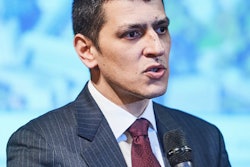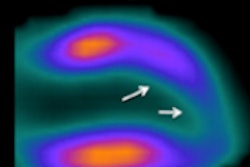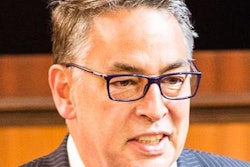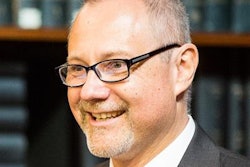
BRUSSELS - Molecular imaging and nuclear medicine are still widely seen as obscure and unproven specialties, and need established figures to champion them, a leading European nuclear medicine expert told delegates at last week's special event organized by the Association of Imaging Producers & Equipment Suppliers (AIPES).
 It's important to allay the safety and price concerns often raised against nuclear medicine, said Dr. Val Lewington. All photos courtesy of Alohafred Photography, Brussels, www.alohafred.com.
It's important to allay the safety and price concerns often raised against nuclear medicine, said Dr. Val Lewington. All photos courtesy of Alohafred Photography, Brussels, www.alohafred.com."There are not enough evangelists out there," said Dr. Val Lewington, chair of Clinical Therapeutic Nuclear Medicine at King's College London. "Molecular imaging is at the forefront of innovation and technology, and opens the way to personalized medicine."
At the meeting, called "Paving the way to the best sustainable molecular healthcare model in Europe," and held in Brussels on 7 May, she said molecular imaging was one of the best kept secrets in medicine. She admitted that the wider medical community had yet to acknowledge the benefits of molecular imaging and the promise the technology offers.
"It is one of the most exciting, innovative areas of medicine at the forefront of drug discovery and oncology therapy," Lewington said, pointing out that PET with CT or MRI is vital for drug development in oncology, cardiology, and neurosciences.
She added that it was important to allay the safety and price concerns often raised against nuclear medicine, noting molecular imaging is safe and cost-effective in terms of sensitivity and selectivity.
Furthermore, molecular imaging can help with the three most critical issues for an aging European population, which she identified as cardiologic issues (where molecular techniques can tell when the heart is under pressure), neurodegenerative diseases (imaging of the brain can tell how badly afflicted a patient is), and cancer (if targeted drugs are used, cancer can be easily identified and treatment can be prescribed).
"It can be systemic, with simultaneous multisite treatments. And selective, which reduces side effects," Lewington said.
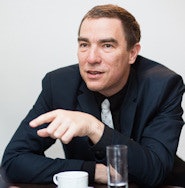 Molecular imaging methods are well suited for improved patient selection for expensive therapies, according to Dr. Marcus Hacker.
Molecular imaging methods are well suited for improved patient selection for expensive therapies, according to Dr. Marcus Hacker.The specialty is expanding so rapidly there is enormous scope for developing subspecialist expertise and building an international reputation, she continued. Nuclear medicine techniques are often used to assess the impact of new developments in other fields, so close collaboration with referring clinicians and radiologists via multidisciplinary meetings, etc., is one of the most appealing aspects of the specialty. Overall, the nuclear medicine specialist is uniquely able to keep abreast of innovations in almost every other area of medicine.
The rise of nuclear medicine will not only provide safer and more efficient tumor treatments, but also it will help doctors make tricky decisions on which patients to prioritize, according to Dr. Marcus Hacker, director of the Division of Nuclear Medicine at the Medical University of Vienna. He told attendees that the technologies would be able to show which patients had greater therapy needs, ensuring that the eventual treatment decisions were based on more informed criteria.
"We have to preselect patients for expensive therapies. Nuclear medicine molecular imaging methods are well suited for improved patient selection for expensive therapies, and are cost-effective," he said.
Hacker said the emergence of personalized medicine customized for individual patients was likely to depend heavily on the role of genetics to provide better diagnosis, safer drug prescriptions, and more effective treatments. He pointed out when it came to cardiac resynchronization or other expensive device therapies nuclear medicine could save up to 40,000 euros per treatment by helping to set priorities.
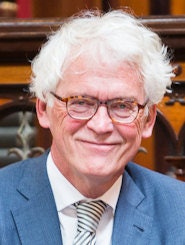 Molecular imaging saves unnecessary treatments, avoiding patient discomfort and side effects, Dr. Fred Verzijlbergen told delegates at the Brussels event.
Molecular imaging saves unnecessary treatments, avoiding patient discomfort and side effects, Dr. Fred Verzijlbergen told delegates at the Brussels event."A better preselection of patients can significantly prolong the life of patients with severe heart failure that get no implantable cardioverter defibrillator (ICD) systems according to the current inclusion criteria and could save money in patients who get inappropriate therapy," he said.
Hacker's message about prioritizing patients was echoed at the conference by Dr. Fred Verzijlbergen, who heads the Department of Nuclear Medicine at the Erasmus Medical Center in Rotterdam, the Netherlands.
"Molecular imaging is the heart and soul of personalized medicine. But without proper selection of patients, it will lead to a tremendous increase of reimbursements," he said.
Verzijlbergen underlined how molecular imaging was both effective and safe in the diagnosis, staging, 'prognostication,' and follow-up of many clinical indications.
"It saves unnecessary treatments, avoiding patient discomfort and side effects," he said. "It saves money... and is the cornerstone of radionuclide therapy."
But Verzijlbergen, who is also the president of the European Association of Nuclear Medicine (EANM), warned that large-scale registration studies were lacking. He added support was needed from large clinical bodies like the European Organization for Research and Treatment of Cancer (EORTC). Interim and end of therapy imaging may be essential, and the development of new compounds needed financial support from international organizations, health insurance companies, and industry, he said.




